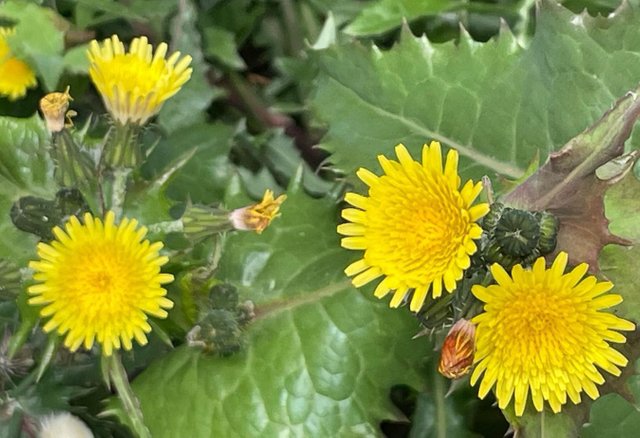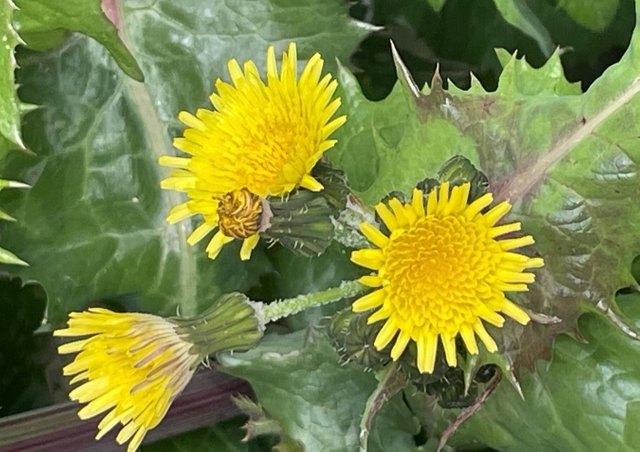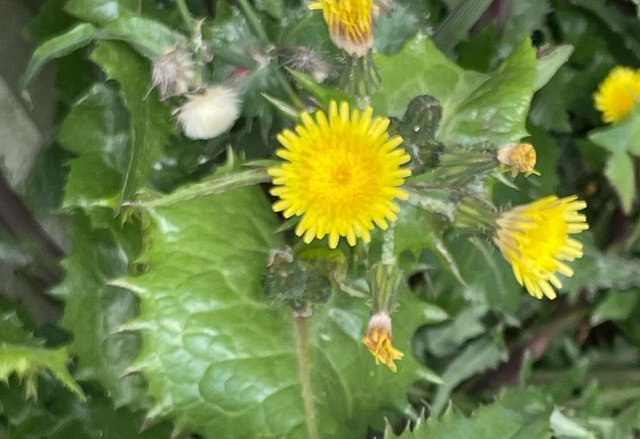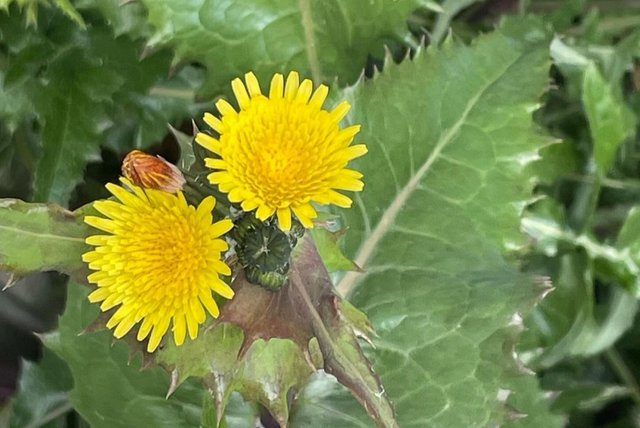Common Sowthistle (Sonchus oleraceus) stands as a testament to nature's resilience and understated beauty. Often overlooked and dismissed as a mere weed, this humble plant possesses a charm and adaptability that deserve appreciation.The Common Sowthistle is a member of the Asteraceae family, characterized by its bright yellow, dandelion-like flowers and lobed leaves with prickly margins. Native to Europe, Asia, and North Africa, it has since naturalized in various parts of the world, thriving in disturbed habitats, roadsides, fields, and gardens. Its ability to colonize diverse environments with ease speaks to its adaptability and tenacity.Despite its reputation as a weed, the Common Sowthistle plays a vital role in the ecosystem. Its flowers provide a source of nectar for pollinators such as bees and butterflies, contributing to the biodiversity of plant-pollinator interactions. Additionally, its seeds serve as food for birds and small mammals, further enhancing its ecological value.





In addition to its ecological role, the Common Sowthistle has a long history of culinary and medicinal use. Its young leaves are edible and rich in nutrients, often used in salads, stir-fries, and soups in various cuisines around the world. Moreover, the plant has been utilized in traditional medicine for its purported diuretic, anti-inflammatory, and hepatoprotective properties, although caution is advised due to potential toxicity in large quantities.